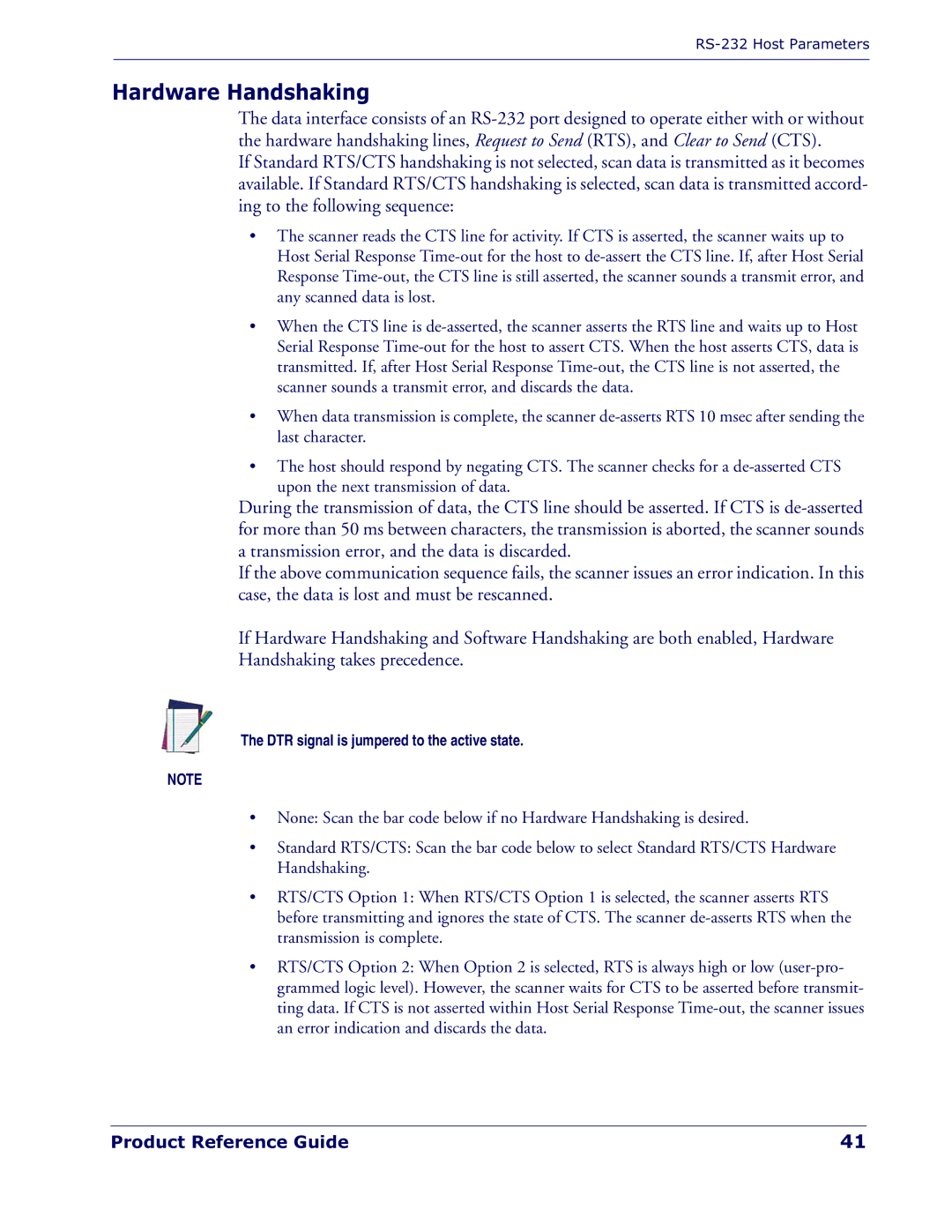
Hardware Handshaking
The data interface consists of an
If Standard RTS/CTS handshaking is not selected, scan data is transmitted as it becomes available. If Standard RTS/CTS handshaking is selected, scan data is transmitted accord- ing to the following sequence:
•The scanner reads the CTS line for activity. If CTS is asserted, the scanner waits up to Host Serial Response
•When the CTS line is
•When data transmission is complete, the scanner
•The host should respond by negating CTS. The scanner checks for a
During the transmission of data, the CTS line should be asserted. If CTS is
If the above communication sequence fails, the scanner issues an error indication. In this case, the data is lost and must be rescanned.
If Hardware Handshaking and Software Handshaking are both enabled, Hardware Handshaking takes precedence.
The DTR signal is jumpered to the active state.
NOTE
•None: Scan the bar code below if no Hardware Handshaking is desired.
•Standard RTS/CTS: Scan the bar code below to select Standard RTS/CTS Hardware Handshaking.
•RTS/CTS Option 1: When RTS/CTS Option 1 is selected, the scanner asserts RTS before transmitting and ignores the state of CTS. The scanner
•RTS/CTS Option 2: When Option 2 is selected, RTS is always high or low
Product Reference Guide | 41 |
